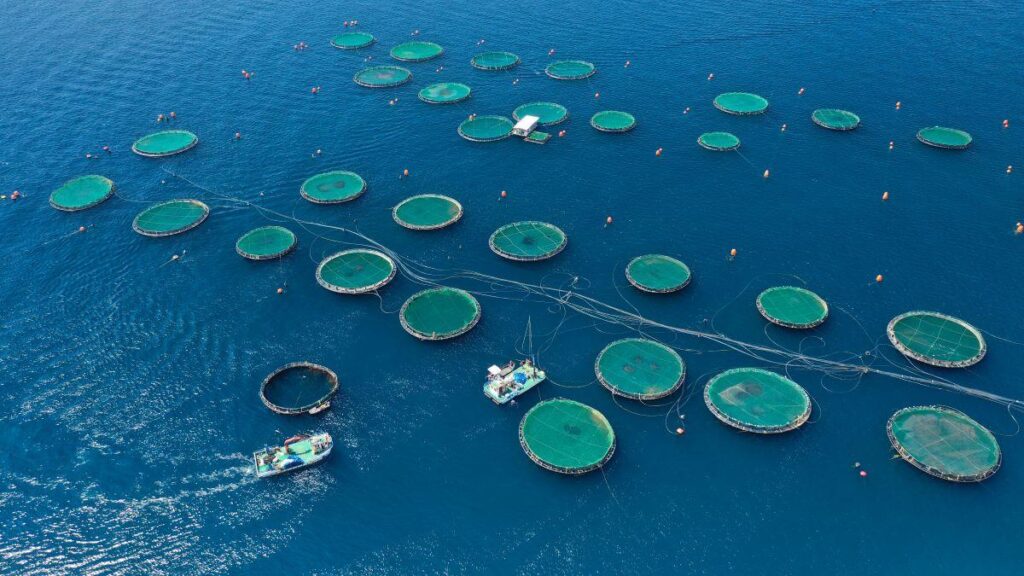The global ocean economy, currently valued at an impressive $2.5 trillion, stands at a critical juncture. As industries ranging from shipping and fisheries to tourism and renewable energy drive unprecedented growth, mounting environmental challenges and regulatory pressures demand urgent action. In its latest report, Fortune underscores the imperative for capital investment to pivot towards sustainable practices, warning that the future of this vital economic sector-and the health of the planet’s oceans-hangs in the balance.
The Growing Risks Facing the Global Ocean Economy
The ocean economy, valued at over $2.5 trillion annually, faces unprecedented threats that could undermine its long-term viability. Rising sea temperatures, increased acidification, and rampant overfishing are accelerating degradation of marine ecosystems. Coastal infrastructure, vital to global trade and tourism, is increasingly vulnerable to extreme weather events, causing billions in economic losses each year. Without decisive capital investment toward sustainability, the economic foundation that millions depend on-ranging from fisheries to renewable ocean energy-is at risk of irreversible damage.
Key risk factors defying traditional economic models include:
- Loss of biodiversity: Disrupting food chains and impacting fishery yields.
- Pollution influx: Plastics and chemical runoff choking marine habitats.
- Infrastructure decay: Ports and coastal assets exposed to rising sea levels.
| Risk Factor | Economic Impact | Urgency Level |
|---|---|---|
| Biodiversity Loss | $500B annually | High |
| Marine Pollution | $300B annually | Critical |
| Infrastructure Damage | $450B annually | High |
To safeguard this vast economic resource, capital markets and policymakers must integrate ocean health metrics into every strategic decision, ensuring investments bolster resilience while promoting sustainable growth.
How Climate Change and Overfishing Threaten Billions in Revenue
The oceans, which generate an estimated $2.5 trillion annually, are increasingly imperiled by the dual threats of climate change and overfishing. Rising sea temperatures disrupt marine ecosystems, altering fish migration patterns and reducing stock recruitment rates. Meanwhile, decades of overexploitation have left many key species on the brink of collapse, putting pressure not only on biodiversity but also on coastal economies reliant on fishing and tourism industries. Experts warn that without decisive action, these factors could erode billions in revenue, destabilizing markets and threatening food security for millions worldwide.
Key risks to the ocean economy include:
- Coral reef degradation: Loss of habitats critical to fish breeding and shelter.
- Collapse of commercial fisheries: Declines already observed in tuna, cod, and other staples.
- Increased ocean acidification: Weakening shellfish and disrupting marine food chains.
- Rising sea levels: Threatening coastal infrastructure crucial for fisheries and tourism.
| Threat | Projected Economic Impact by 2030 | Primary Sectors Affected |
|---|---|---|
| Overfishing | $400 billion loss | Commercial fisheries, Seafood processing |
| Climate-driven ecosystem changes | $600 billion loss | Tourism, Aquaculture, Fisheries |
| Ocean acidification | $250 billion loss | Shellfish harvesting, Coastal economies |
Why Investors Must Prioritize Sustainable Practices to Secure Future Growth
The ocean economy, valued at an impressive $2.5 trillion, is not just a pillar of global commerce but also a delicate ecosystem facing unprecedented threats. Investors hold the keys to its future sustainability, and their decisions today will determine the trajectory of coastal communities, marine biodiversity, and industries such as fisheries, tourism, and renewable energy. Prioritizing sustainable finance means recognizing the inextricable link between healthy oceans and long-term economic viability. Investments in regenerative aquaculture, emissions reduction technologies, and ocean clean-up projects create resilient value chains capable of withstanding climate shocks and resource depletion.
Failure to embed sustainability criteria risks severe financial and reputational consequences. Increasing regulations, shifting consumer sentiments, and the growing prominence of ESG (Environmental, Social, and Governance) standards make sustainable investment a practical imperative rather than a choice. Key priorities for investors include:
- Supporting innovation in blue technologies to reduce carbon footprints and protect marine habitats
- Engaging transparently with stakeholders to ensure accountability and measurable impact
- Allocating capital toward regenerative projects that harmonize profitability with conservation efforts
| Investment Area | Projected Growth (%) | Environmental Impact |
|---|---|---|
| Sustainable Fisheries | 12 | High |
| Ocean-Based Renewable Energy | 20 | Very High |
